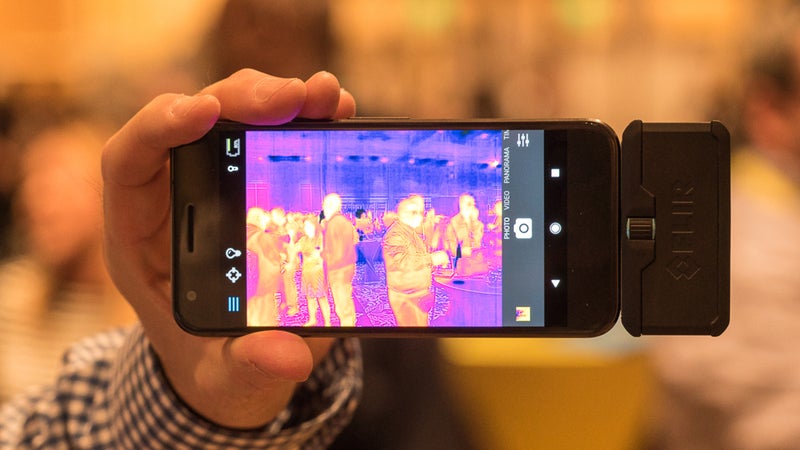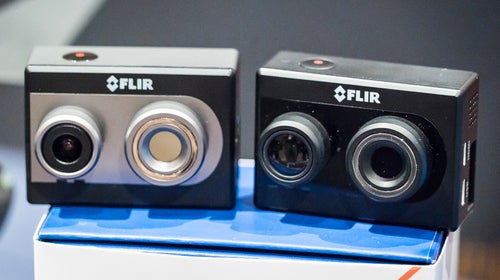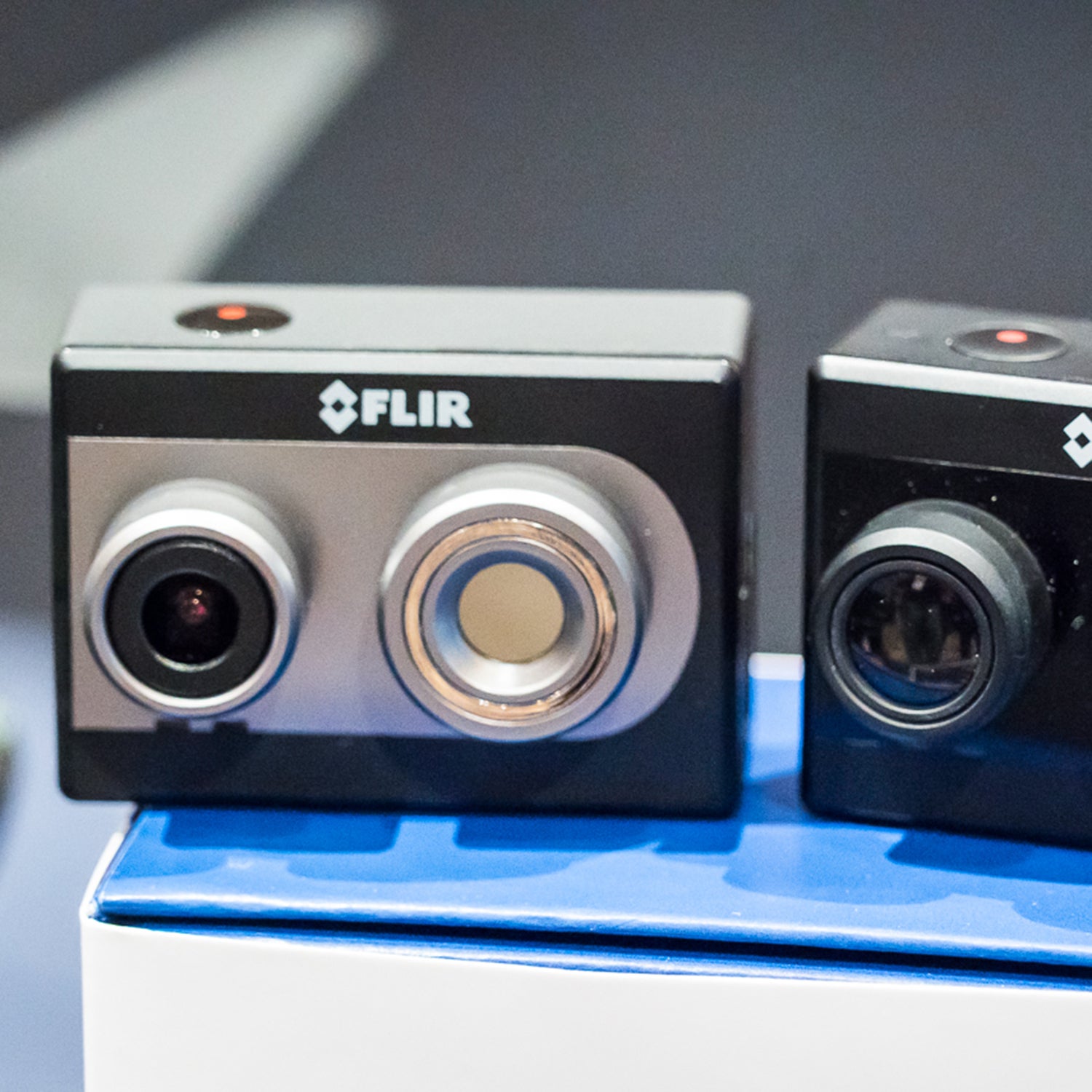($1,000), announced earlier this month at CES, is the first thermal camera to borrow an action cam’s form factor. Sure, you could use it film a snowboarder ripping through powder at night like a zigzagging comet, but there’s a far more practical application here.
Thermal imaging can be an incredibly valuable tool for search and rescue teams. Our pathetic human eyes can see only a tiny fraction of the light spectrum. We get a rainbow’s worth, and that’s just about it. Using cameras that can see the longer wavelengths of light that heat emits means search and rescue teams can potentially locate a lost hiker even on a moonless night. Over the past few years, Flir has been instrumental in miniaturizing thermal cameras and reducing the price (they often cost several thousand dollars). But why the action-camera form factor? Here’s a one-word answer for you: drones.
Several drones on the market can carry the Duo. These include lower-end DJI Phantom drones and the extremely cheap 3DR Solo, making the Duo an invaluable SAR tool. The hope is that SAR teams will fly the Duo and use it to cover far more terrain much faster. It could potentially save a lot of lives.
The camera is available now, and for $1,300 you get the more advanced version capable of giving accurate temperature readings (geared toward industrial uses). Flir also announced the new generation of its thermal cameras that snap onto your smartphone: the , with the latter being capable of granular temperature readings. These are available for $200 and $400, respectively, and may be used for SAR, industrial applications, or any number of annoying pranks.



